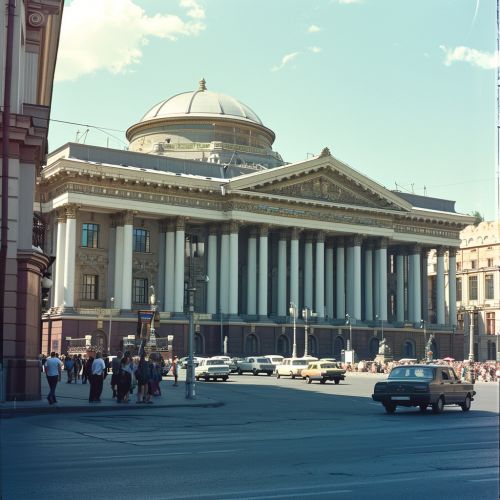Supreme Soviet of the Russian Soviet Federative Socialist Republic
History
The Supreme Soviet of the RSFSR was the highest legislative and administrative body of the Russian Soviet Federative Socialist Republic (RSFSR), one of the constituent republics of the Soviet Union. It was established in 1937, replacing the All-Russian Central Executive Committee.


The Supreme Soviet was composed of two chambers, the Soviet of the Union and the Soviet of Nationalities, which were equal in authority and status. Each chamber was elected for a term of four years, with elections being held simultaneously in all republics of the Soviet Union.
The Supreme Soviet was responsible for the adoption and amendment of the Constitution of the RSFSR, the enactment of laws, and the approval of the republic's budget. It also had the power to decide on matters of war and peace, and to ratify international treaties.
Structure and Functioning
The Supreme Soviet was a bicameral body, consisting of two chambers: the Soviet of the Union and the Soviet of Nationalities. Each chamber had an equal number of deputies, who were elected for a term of four years.
The Soviet of the Union was composed of deputies elected on the basis of one deputy for every 300,000 inhabitants of the republic. The Soviet of Nationalities was composed of deputies elected on the basis of one deputy for each national-territorial unit of the republic.
The Supreme Soviet convened for regular sessions twice a year, in the spring and in the fall. Extraordinary sessions could be convened by the Presidium of the Supreme Soviet, the body that acted on behalf of the Supreme Soviet when it was not in session.
The Supreme Soviet elected its own Presidium, which consisted of a Chairman, several Vice-Chairmen, a Secretary, and members. The Presidium was responsible for the preparation and organization of the Supreme Soviet's sessions, and for the implementation of its decisions between sessions.
Role in the Soviet System
The Supreme Soviet of the RSFSR, like its counterparts in other Soviet republics, was part of the larger Soviet system of government. It was subordinate to the Supreme Soviet of the USSR, the highest legislative body of the Soviet Union.
Despite its formal status as the highest legislative body of the RSFSR, the Supreme Soviet was in practice largely a rubber-stamp institution. The real power in the Soviet system was held by the Communist Party of the Soviet Union (CPSU), and its decisions were effectively made by the party's Central Committee and its Politburo.
The Supreme Soviet's role was primarily to give formal approval to decisions already made by the party leadership. However, it also served as a forum for the discussion of policy issues, and its sessions were widely reported in the Soviet media.
Dissolution and Legacy
With the dissolution of the Soviet Union in 1991, the Supreme Soviet of the RSFSR was transformed into the Supreme Soviet of the Russian Federation. This body was in turn replaced by the Federal Assembly of the Russian Federation in 1993, following a constitutional crisis and the adoption of a new constitution.
The legacy of the Supreme Soviet of the RSFSR is a complex one. On one hand, it was a symbol of the Soviet system of government, with its lack of genuine democratic representation and its subordination to the Communist Party. On the other hand, it was also a forum for the discussion of policy issues and a mechanism for the formal enactment of laws and decisions.
